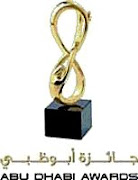We are what we are
13 Nov, 2007, 0656 hrs IST, TNN
Let us consider the business enterprises operating from the early part of the 20th century until 1990. These included the Godrej Group established by Ardeshir and Pirojsha Godrej in 1897; the Birla Group established by Shiv Narayan Birla in the mid 19th century and later developed by Ghanshyam Daas Birla; the Tata Group established by Jameshetji Nusserwanji Tata in the late 19th century and later developed by JRD Tata; the Kirloskar Group established by Laxmanrao Kirloskar in 1888 and later developed by S L Kirloskar, the Bajaj Group established by Jamnalal Bajaj in the early 20th century and later developed by Rahul Bajaj; and the Murugappa Group established by Murugappa Chettiar in the late 18th century.
They were mostly traders with a few manufacturing plants in fields such as steel and textiles. The ideology of socialism adopted by the Congress party and the resultant principle of self sufficiency protected these businesses from foreign competition and imported goods.
Apart from when they were first set up, the leadership of the status quo in their organisation with hardly any incentives for innovation, break through ideas or revolutionary changes. Even when they were first set up, most of these business organisations were closely intertwined with the political ideology of the freedom struggle and had nation building as a concomitant principle and value.
Indian business leaders at this time were greatly impacted by the political ideology and inspired by notions of patriotism. Laxmanrao Kirloskar, Ghanshyam Das Birla and Jamnalal Bajaj were all considered close associates of Gandhi and were influenced significantly by the great man’s ideology . It is true that many of them had great vision. Almost all of them nurtured strong values such as loyalty and social welfare. They possessed many leadership traits such as intelligence, stamina, courage energy and determination.
Almost all of them adopted a leadership style that was autocratic or benevolent, directive oriented, hierarchy bound and rule driven. Since many of the businesses were family managed, there was this practice of a lala culture in organisations when the head of the family was also considered the wisest and the ultimate decider. The economic environment of the early independent years often governed how business was managed and led.
According to Dwijendra Tripathy, the absence of inducement from the environment also explains why the business profession did not attract new elements into its fold— why new businessmen did not emerge from those groups and sections amongthe Hindus, that, under the time honored social divisions, had been traditionally engaged in other occupations.
With the existing opportunities having been already pre-empted by the mercantile classes, for whom business had been a prescribed occupational boundaries to enter business profession only if there were a definite expansion of opportunities, generating a sufficiently higher expectancy of reward than they derived from their current occupations. This was hardly possible, given the static condition of the business situation.’
The impetus provided by post independent India gave rise to a number of new entrants in Indian business. These included Dhirubhai Ambani of Reliance , Nambiar of BPL, Mammen Mapplillai of MRF, Mittal of Ispat, Brijmohan Lall Munjal of Hero Honda, Anantharamakrishnan of Amalgamations , Uttambhai Mehta of Torrent, Karsanbhai Patel of Nirma, Raju of Nagarjuna Gropup, Raunaq Singh of Apollo Tyres, Nanda Escorts and Bhai Mohan Singh of Ranbaxy. These entrepreneurs — many of them first generation—seized the opportunities presented to them and created business enterprises that were to become global after the liberalisation of the Indian economy in 1991. But, they mostly remained family enterprises.
The other seemingly conflicting and significant characteristic of post independent Indian business is the fact that most of the business houses, owned and managed by families, were on the verge of family business and has continued even today. Urbanisation, Westernisation, higher education of the new generation of family members and changing socio cultural landscape have all contributed to this phenomenon.
As many as 25 family business houses have split during the last 25 years. These have included names such as Birlas Modis, Bajajs, Sighanias, Bangurs, Mafatlals, Kirloskars and more recently , the Ambanis. Despite this, control in family owned business organisations has remained largely within the family. Recognition of the need for inducitng professional leadership has been slow in coming and only a few organisations such as Eicher and Murugappa have gone ahead in this direction...

Search
Tuesday, 13 November 2007
Subscribe to:
Post Comments (Atom)
























No comments:
Post a Comment